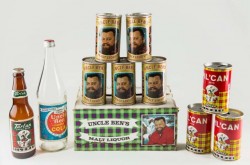The BX: Queen of the Upper Fraser
This article was originally written and submitted as part of a Canada 150 Project, the Innovation Storybook, to crowdsource stories of Canadian innovation with partners across Canada. The content has since been migrated to Ingenium’s Channel, a digital hub featuring curated content related to science, technology and innovation.
The era of the paddlewheel boats on the Upper Fraser was brief, but the allure of this by-gone time endures. The first paddlewheeler to navigate the Upper Fraser was the S.S. Enterprise in 1871. They were trying to find a navigable route to deliver supplies from Soda Creek to the gold mines at Germansen Creek, far to the north. On the return trip she suffered severe damage forcing a beaching on Trembleur Lake, north of Stuart Lake. The crew had a long walk back to Quesnel. Paddlewheelers would not attempt to navigate the Upper Fraser for another 37 years.
Eleven paddlewheelers would ply the hazardous waters of the Upper Fraser between 1908 and 1921. The grandest and most famous of these vessels was the S.S. BX.; which was launched without ceremony on May 13th, 1910. The BX had to deal with unfounded rumours and superstition. This was partly due to the fact that the British Columbia Express Company launched the BX on Friday the thirteenth in May of 1910. The shipyard workers were wary of the BX’s luck and so to pacify them the British Columbia Express Company explained that Friday the thirteenth was the company’s lucky day. She eventually won over the doubters and was known from then on as “The Queen of the North,” owing to her great speed, comfortable accommodation and the reliability of her scheduled service.
The BX was the first paddlewheel boat powerful enough to negotiate the Cottonwood and Fort George Canyons without lining through using a capstan.
She had steam heated staterooms, red velvet carpet, blankets and linens of excellent quality. The Hudson’s Bay Company provided an upholsterer to cut and lay carpets, hang the curtains, and generally ensure that the ship looked as tasteful as possible. Premier McBride stayed in one of her richly appointed staterooms while travelling in this rugged country.
On her last trip in August 1919, the S.S. BX carrying 100 tons of cement in sacks, struck a reef, 5 miles below Fort George Canyon. Captain Browne laid her up on what he thought was a narrow beach, but it turned out to be only a narrow ledge which collapsed under the weight. The bow sank 20 feet deep in the water. The solidified sacks of cement had to be separated and hauled out before salvage operations could start. Caulkers and ship builders were brought in from Victoria to salvage the boat at a total cost of $40,000. The S.S. BX was brought to Prince George, her boilers and engines removed, with the structure left to deteriorate.


















